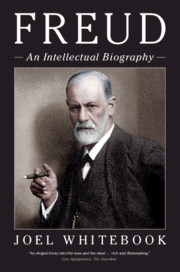Book contents
- Freud
- Freud
- Copyright page
- Dedication
- Dedication
- Contents
- Acknowledgments
- Introduction
- 1 Wandering Jews: From Galicia to Vienna
- 2 Freud's Bildung
- 3 Science as Vocation
- 4 Starting Out in Vienna
- 5 A Theoretical Excursus
- 6 “Dear Magician”
- 7 Becoming the First Psychoanalyst
- 8 Jung and the Counter-Enlightenment
- 9 Exorcising the “Odium Jungian”
- 10 “What Is Painful May None the Less Be Real”: Loss, Mourning, and Ananke
- 11 Making Sense of the Death Instinct
- 12 Leaving Heaven to the Angels and the Sparrows: Freud's Critique of Religion
- 13 Late Freud and the Early Mother
- Bibliography
- Index
- References
Bibliography
Published online by Cambridge University Press: 16 February 2017
- Freud
- Freud
- Copyright page
- Dedication
- Dedication
- Contents
- Acknowledgments
- Introduction
- 1 Wandering Jews: From Galicia to Vienna
- 2 Freud's Bildung
- 3 Science as Vocation
- 4 Starting Out in Vienna
- 5 A Theoretical Excursus
- 6 “Dear Magician”
- 7 Becoming the First Psychoanalyst
- 8 Jung and the Counter-Enlightenment
- 9 Exorcising the “Odium Jungian”
- 10 “What Is Painful May None the Less Be Real”: Loss, Mourning, and Ananke
- 11 Making Sense of the Death Instinct
- 12 Leaving Heaven to the Angels and the Sparrows: Freud's Critique of Religion
- 13 Late Freud and the Early Mother
- Bibliography
- Index
- References
- Type
- Chapter
- Information
- FreudAn Intellectual Biography, pp. 455 - 470Publisher: Cambridge University PressPrint publication year: 2017



